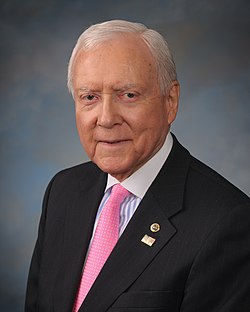| 114th United States Congress | |
|---|---|
113th ← → 115th | |
 United States Capitol (2016) | |
January 3, 2015 – January 3, 2017 | |
| Members | 100 senators 435 representatives 6 non-voting delegates |
| Senate majority | Republican |
| Senate President | Joe Biden (D) |
| House majority | Republican |
| House Speaker | John Boehner (R) (until October 29, 2015) Paul Ryan (R) (from October 29, 2015) |
| Sessions | |
| 1st: January 6, 2015 – December 18, 2015 2nd: January 4, 2016 – January 3, 2017 | |

The 114th United States Congress was a meeting of the legislative branch of the United States of America federal government, composed of the United States Senate and the United States House of Representatives. It met in Washington, D.C., from January 3, 2015, to January 3, 2017, during the final two years of Barack Obama's presidency. The seats in the House were apportioned based on the 2010 United States census. [1] [2] [3]
Contents
- Major events
- Major legislation
- Enacted
- Proposed
- Vetoed
- Party summary
- Senate
- House of Representatives
- Leadership
- Senate 2
- House of Representatives 2
- Members
- Senate 3
- House of Representatives 3
- Changes in membership
- Senate 4
- House of Representatives 4
- Committees
- Senate 5
- House of Representatives 5
- Joint committees
- Caucuses
- Employees
- Senate 6
- House of Representatives 6
- Legislative branch agency directors
- See also
- Elections
- Membership lists
- Notes
- References
- External links
The 2014 elections gave the Republicans control of the Senate and the House for the first time since the 109th Congress. With 248 seats in the House of Representatives and 54 seats in the Senate, this Congress began with the largest Republican majority since the 71st Congress of 1929–1931. As of 2025 [update] , this was the most recent Congress in which the Senate was controlled by the opposing party of the president for its entire session.





















